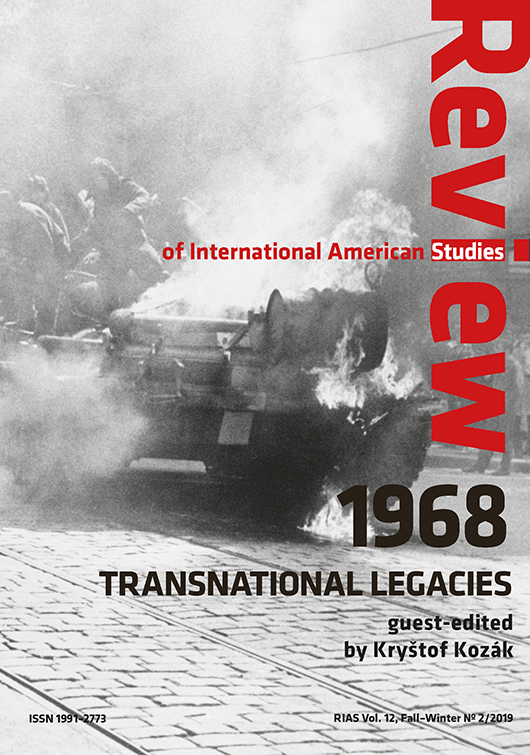

 https://doi.org/10.31261/rias.7376
https://doi.org/10.31261/rias.7376
The role of mass protest has been recurrently central yet controversial in the American culture. Central because American history presents a constellation of significant collective protest movements, very different among them but generally symptomatic of a contrast between the people and the state: from the 1775 Boston Massacre and the 1787 Shays’s Rebellion, to the 1863 Draft Riots, but also considering the 1917 Houston Riot or anti-Vietnam war pacifist protests. Controversial, since despite—or because of—its historical persistence, American mass protest has generated a media bias which labelled mobs and crowds as a disruptive popular expression, thus constructing an opposition—practical and rhetorical—between popular subversive tensions, and the so-called middle class “conservative” and self-preserving struggle.
During the 20th century, this scenario was significantly influenced by 1968. “The sixties [we]re not fictional”, Stephen King claims in Hearts of Atlantis (1999), in fact “they actually happened”, and had a strong impact on the American culture of protest to the point that their legacy has spread into the post 9/11 era manifestations of dissent. Yet, in the light of this evolution, I believe the very perception of protesting crowds has transformed, producing a narrative in which collectivity functions both as “perpetrator” and “victim”, unlike in the traditional dichotomy. Hence, my purpose is to demonstrate the emergence of this new and historically peculiar connotation of crowds and mobs in America as a result of recent reinterpretations of the history and practice of protest in the 1960s, namely re-thinking the tropes of protest movements of those years, and relocating them in contemporary forms of protest. For this reason, I will concentrate on Nathan Hill’s recent novel, The Nix (2016), and focus on the constant dialogue it establishes between the 1968 modes of protest and the Occupy movement.
Download files
Citation rules

Vol. 12 No. 2 (2019)
Published: 2020-01-19
 10.31261/RIAS
10.31261/RIAS